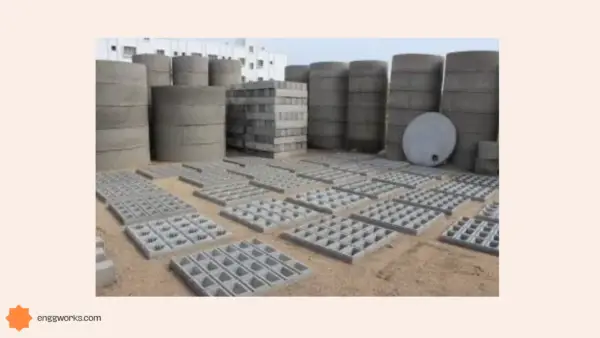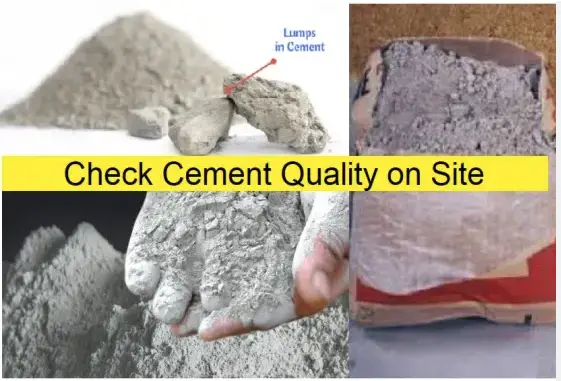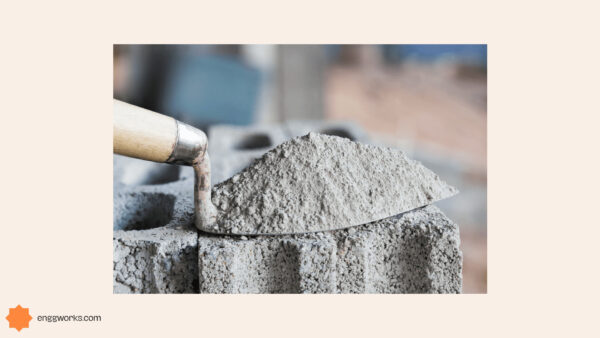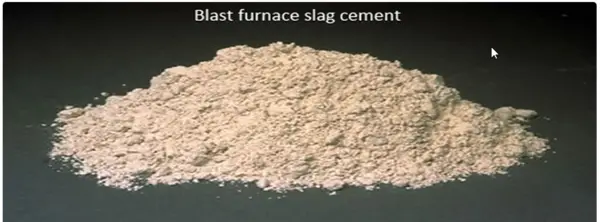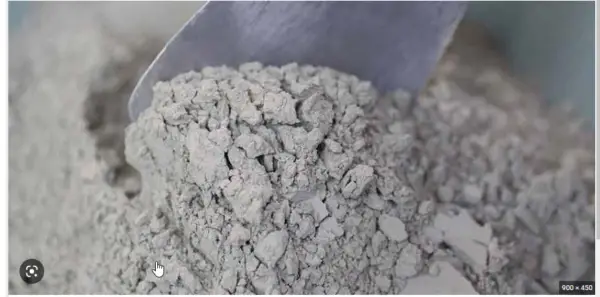One of the most frequently used building materials worldwide is cement. Cement is a vital building component that is utilized for numerous construction projects all over the world.
It is a hydraulic binder that can bind different materials together and hardens when combined with water.
Calcareous and argillaceous raw materials are used in the manufacture of Portland cement.
Calcareous raw materials include limestone, chalk, marine shells, marl.
Argillaceous raw materials include shale clay, blast furnace slag, slate.
Calcium silicate, which is mostly found in cement, is created by heating clay and limestone to high temperatures.
Manufacturing of Cement Process
Source- https://chemicalengineeringworld.com/cement-manufacturing-process/
Manufacturing of cement is a process that involves several steps, from extracting raw materials to packaging and shipping the final product.
In this blog post, we will explain two main processes of cement manufacturing and how they affect the quality and properties of cement.
The wet process and the dry process are the two primary ways that cement is made.
Wet Process
The steps involved in the wet process of cement manufacturing are given below:

Cement is manufactured using an earlier, less popular method called wet production. In the wet process, which involves grinding raw materials into a slurry and then feeding them into a rotary kiln for drying and calcination.
Total Time: 3 minutes
-
Raw Material Preparation
The raw materials such as limestone, clay, and iron ore are crushed and then ground into a fine powder in ball mills or tube mills.
To ensure an effective reaction in the kiln, the raw mix’s particle size should be less than 25 mm. -
Mixing and storing
To create a slurry, the ground raw materials are combined with water at a ratio of roughly 35 to 50 percent.
The slurry is kept in constant motion by rotating arms or compressed air while being held in tanks or basins to stop solids from settling. -
Burning and cooling
The slurry is introduced into a rotary kiln, a lengthy cylindrical boiler that rotates on its axis.
The kiln consists of three zones: the upper zone, known as the preheating zone, where hot gases from the lower zone dry and heat the slurry;the middle zone, known as the calcining zone, where a temperature of about 1500 °C is reached and the calcium carbonate in the slurry breaks down into calcium oxide and carbon dioxide;
and the lower zone, known as the clinkering zone, where a temperature of about 1700°C is reached and the calcium oxide reacts with silica, alumina, and iron oxide to form calcium silicate (or clinker), which is the main component of cement.
Red-hot nodules of clinker that range in diameter from 5 to 10 mm are released from the kiln. -
Grinding and storing
The clinker is carried to a grinding mill, rapidly cooled by air or water quenching, and combined with gypsum (between 3 and 5 percent) and other additives to control the cement’s characteristics and setting time.
Cement, the finished product, is a fine powder that is kept in silos and then packaged in bags or bulk for shipment for later use.
Advantages Of Wet Process
- Raw material extraction and grinding are inexpensive.
- The composition of the slurry can be precisely controlled.
- A homogeneous slurry can be created.
- A separate drying procedure is not necessary.
- After solidification, wet process cement has a high and steady product quality, precise ingredient ratio, and long service life.
- The slurry produced in the wet process contains less dust which can be beneficial for worker health and safety.
Disadvantages Of Wet Process
- The wet process uses more raw materials overall than the dry technique, which might raise production prices.
- Wet processes take longer to complete than dry processes, which can lead to longer production schedules and more expensive labour.
- Quality is more difficult to manage with the wet process, which might lead to differences in the finished product.
- The wet process uses a lot of water, which can be problematic in places where there is a water shortage.
Flowchart of cement manufacturing- Wet Process
Source- Building materials by S.K.Duggal
Dry process
Source – https://gharpedia.com/blog/dry-process-for-manufacturing-of-cement/
Today, the dry technique is the one that is most frequently utilized to make cement. Dry raw materials are used in this process, and after being ground into a fine powder, they are put into a kiln.
The following are the main steps of the dry process of cement manufacturing:
Raw Material Preparation
- Using crushers, the raw materials, including clay and limestone, are reduced to a size of approximately 25 mm.
- According to their chemical composition and quality, they are then stored in various silos or hoppers.
Mixing and Storage
- The raw components are subsequently combined in the proper ratios with the aid of mechanical or compressed air devices.
- Raw mix or raw meal is the name for this raw material powder that has been finely pulverised.
- Until it is time to feed it into the preheater, the raw mix is kept in a storage tank or silo.
Preheating
- The raw mixture is fed into a preheater, which is a network of cyclones that heat up and partially calcine the raw mixture using hot exhaust gases from the kiln.
- In addition to removing some moisture and carbon dioxide from the raw mix, this lowers the amount of fuel required to burn it in the kiln.
Burning and cooling
- A rotary kiln, which is a lengthy cylindrical furnace that spins on its axis, is then fed with the preheated raw mixture.
- The kiln is divided into three sections: the upper, or drying section, where moisture that is still present evaporates; the middle, or burning section, where the temperature reaches about 1400–1500 °C and the raw mixture reacts to form clinker; and the lower, or cooling section, where the clinker cools gradually.
- After being removed from the kiln, the clinker is placed in a cooler where it is further cooled using either air or water.
Grinding
- Gypsum and other additives are then added to the cooled clinker to modify the cement’s properties and setting time.
- The combination is subsequently processed in a ball mill or tube mill to create a fine powder. Cement, often known as Portland cement, is this powder.
Advantages Of Dry Process
- Labour productivity is increased
- Low capital is required
- Fuel consumption is reduced
- Modern-day technology can help with the proper mixing of materials in dry form
- Dry process cement has long storage time, so no need to worry about segregation and collapse of cement materials
- More flexible to use in small batches, ready to mix and use
- The dry process cement has a moisture level of 1% to 2%, which reduces the need for heat consumption during moisture evaporation
- It releases fewer greenhouse gases and other pollutants. This is because the dry method produces fewer emissions because it doesn’t utilise any water.
Disadvantages Of Dry Process
- The maintenance cost in this method is high. This is because the abrasive quality of the raw materials and the high temperatures make the dry process plants more susceptible to wear and tear.
- The dry process of cement manufacture is a slow process.
- The quality of cement may not be constant owing to uneven raw material mixing.
- The workshop uses a lot of energy and is quite dusty.
- The modules created in the kiln are tough and take more energy to grind.

Flowchart of cement manufacturing- Dry Process
Source- Building materials by S.K.Duggal
Manufacturing of Cement – Wet Process vs Dry Process
| Sl. No. | Wet Process | Dry Process |
|---|---|---|
| 1. | The raw ingredients are combined with water in this process to create a slurry, which is then fed into a kiln. | In this process, the raw ingredients are ground into a fine powder and then fed into a kiln. |
| 2. | It is employed where there is a plentiful supply of water and where the conditions are conducive to the cement hardening. | This method is employed in regions with limited access to water or when dry weather is suited to the cement’s ability to solidify. |
| 3. | Since the raw materials must be dried before grinding and heating, the wet process takes longer than the dry process. | The raw materials do not need to be dried before being ground and heated, hence the dry process is quicker than the wet process. |
| 4. | Consumes more fuel compared to dry process | Consumes less fuel compared to wet process |
| 5. | Size of the kiln required in this process is less | Size of the kiln required in this process is more |
| 6. | Production cost is more | Production cost is less |
| 7. | Quality of cement produced is superior due to homogeneity of the raw mix | Quality of cement produced is inferior due to uneven raw material mixing |
| 8. | CO2 emission is high | CO2 emission is less |


